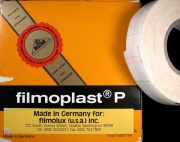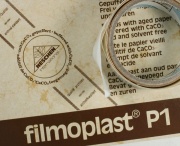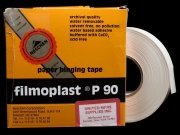Difference between revisions of "Filmoplast tapes"
Jump to navigation
Jump to search
| Line 41: | Line 41: | ||
| − | [[Category:Materials database]][[Category:MWG]][[Category: Tape, single sided]] | + | [[Category:Materials database]][[Category:MWG]][[Category:Tapes]][[Category: Tape, single sided]] |
Latest revision as of 13:47, 1 December 2020
Description
[Neschen AG] A registered trademark for a series of transparent adhesive tapes. The Filmoplast tapes use either clear tissue or white paper carriers and a pH-neutral to alkaline, non-yellowing, water-based acrylic dispersion adhesive (Arenstein et al. 2019).
- Filmoplast P: tissue carrier acid-free mending tape
- Filmoplast P1: translucent paper carrier
- Filmoplast P90: paper carrier with gummed adhesive that is a water activated acrylic dispersion
- Filmoplast R: Japanese mulberry paper carrier buffered with magnesium carbonate. It has an acrylic adhesive.
Applications
- Invisible dry mending of paper documents
- Acid-free mending tape for reparing joints or damaged edges
Personal Risks
Collection Risks
Some adhesives may yellow and become insoluble with time. Links to Oddy Test results posted on AIC Wiki Materials Database Pages for individual materials below
- Filmoplast P90 tested in 2013
- Filmoplast P90 tested in 1997
Environmental Risks
Physical and Chemical Properties
- Filmoplast P: pH = 8.8 (unaged tape) and 8.1 (aged tape)
- Filmoplast P90: pH = 9.1 (unaged tape) and 7.8 (aged tape)
- Filmoplast R: pH = 8.9 (unaged tape)
Resources and Citations
- www.preservationequipment.com
- Rachael Perkins Arenstein, Lisa Goldberg, and Eugenie Milroy, ‘Support and Rehousing for Collection Storage’ In ‘Preventive Conservation: Collection Storage’ Lisa Elkin and Christopher A. Norris (eds.), Society for the Preservation of Natural History Collections, New York. 2019.
- Pam Hatchfield, Pollutants in the Museum Environment, Archetype Press, London, 2002


